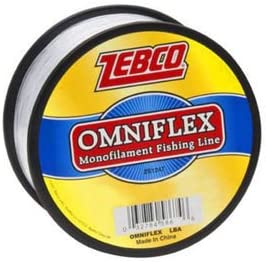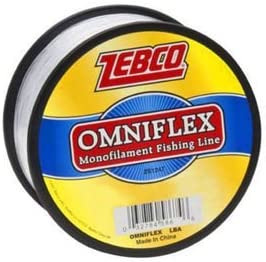The Unseen Thread: From WWII Parachutes to Your Fishing Line - The Story of Nylon
Update on Aug. 2, 2025, 6:40 a.m.
You look at a spool of fishing line, perhaps a Zebco 30lb Test Omniflex, and see a simple tool. You see its 250 yards of potential, its .023-inch diameter, its promise of a connection to the unseen world beneath the water. But to see only that is to miss the dramatic story coiled within its black, plastic form. This is not just a fishing line. It is a direct descendant of a 20th-century miracle, a thread of science and history that once helped decide the fate of nations before it ever landed in a tackle box.
Its story begins not by a quiet lake, but in a high-stakes corporate laboratory during the Great Depression.
A Thread of Genius in a Desperate Time
In the early 1930s, the chemical giant DuPont made a bold wager. In an era of economic collapse, they invested in a “pure science” fundamental research program, a radical idea at the time. They weren’t trying to improve an existing product; they were trying to discover things no one had ever seen before. At the helm of this ambitious project was a brilliant, melancholic chemist from Harvard named Wallace Carothers.
His goal was monumental: to understand how small molecules link together to form giant ones, known as polymers. His team was essentially playing with molecular Tinker Toys, trying to build long, stable chains. In 1935, after years of trial and error, they achieved a breakthrough. By reacting two common chemicals, they created a long-chain polyamide. When they pulled a rod from the beaker of molten goo, it stretched into a thin, shimmering fiber that was not only strong but also lustrously beautiful. It cooled into a filament that was stronger than steel, by weight. They had created the world’s first fully synthetic fiber. They called it Nylon.
Initially hailed as “artificial silk,” Nylon’s first public triumph was the 1939 New York World’s Fair, where it was showcased in the form of women’s stockings. When they finally hit the market, they caused a sensation. But the reign of Nylon stockings would be shockingly brief. History had other, more urgent plans for Carothers’s miracle fiber.
The Molecular Architecture of Strength
Before we follow Nylon to war, we must understand why it was so revolutionary. What gives a thin strand of Zebco Omniflex the backbone to wrestle a 30-pound catfish? The magic lies in its molecular structure.
Imagine a polymer as an impossibly long chain of paperclips, millions of them linked end-to-end. In Nylon, these aren’t just simple chains; they are incredibly orderly and interactive. The specific chemical links in the chain, called amide bonds, create points where adjacent chains can “hold hands” through a powerful type of attraction known as a hydrogen bond.
When you pull on a monofilament line, you aren’t just stretching one chain. You are fighting against the combined force of billions upon billions of these hydrogen bonds, all gripping each other tightly. This collective molecular grip is what we experience as tensile strength—the 30 pounds of force the line is rated for.
Furthermore, the manufacturing process, extrusion, enhances this natural strength. As the molten Nylon is forced through a tiny hole and then stretched in a process called “cold drawing,” these long polymer chains are untangled and pulled into near-parallel alignment. This is like transforming a messy pile of yarn into a tightly wound rope. The molecules become far more organized, allowing more hydrogen bonds to form and multiplying the fiber’s strength exponentially. This elegant process of chemical design and mechanical engineering is what turns a basic polymer into a high-performance filament.
From Fashion to the Front Lines
On December 7, 1941, the attack on Pearl Harbor plunged the United States into World War II. Almost overnight, the nation’s primary source of silk—a critical material for parachutes—was cut off. The U.S. military turned to the only viable alternative: DuPont’s new miracle fiber.
Nylon production was immediately nationalized. The same material that had graced the legs of fashion-forward women was now repurposed to save the lives of airmen. Its superior strength, light weight, and resistance to mildew and insects made it a perfect material for parachutes. But its role didn’t stop there. It was woven into tire cords that could withstand the brutal landings of heavy bombers, used for ropes that could tow gliders, and even fashioned into the body armor that protected soldiers from shrapnel. Wallace Carothers’s laboratory creation had become a vital strategic material, a silent and unseen thread weaving through the Allied war effort.
When the war ended, this military-grade technology flowed back into the consumer market. For a generation of returning soldiers who took up recreational fishing, Nylon monofilament was a revelation. It was a quantum leap beyond the old, unreliable lines made of cotton, linen, or Dacron. It was stronger, thinner, more consistent, and nearly invisible in the water. It democratized angling, making it easier and more successful for millions. The Zebco Omniflex, with its precisely engineered .023-inch diameter, is the perfected result of this post-war boom—a direct beneficiary of wartime innovation.
The Legacy in Your Hand
So, the next time you spool a line like the Zebco Omniflex, take a moment. Feel its smooth, consistent texture. Consider its surprising strength. This is not merely a product. It is the endpoint of a story that involves a brilliant chemist, a world-changing war, and the fundamental laws of chemistry.
It explains why this simple thread is so versatile that people use it for everything from securing balloon arches to creating humane deer fences, as noted in user reviews. Its strength and reliability are not an accident; they were designed at the molecular level for the most demanding applications imaginable.
The unseen thread in your hand is a piece of history. It connects you to the laboratory, to the battlefield, and to the dawn of the modern materials age. Understanding this story doesn’t just make you a more informed angler; it enriches the entire experience, reminding us that even in the most ordinary objects, there is an extraordinary tale waiting to be discovered.







































